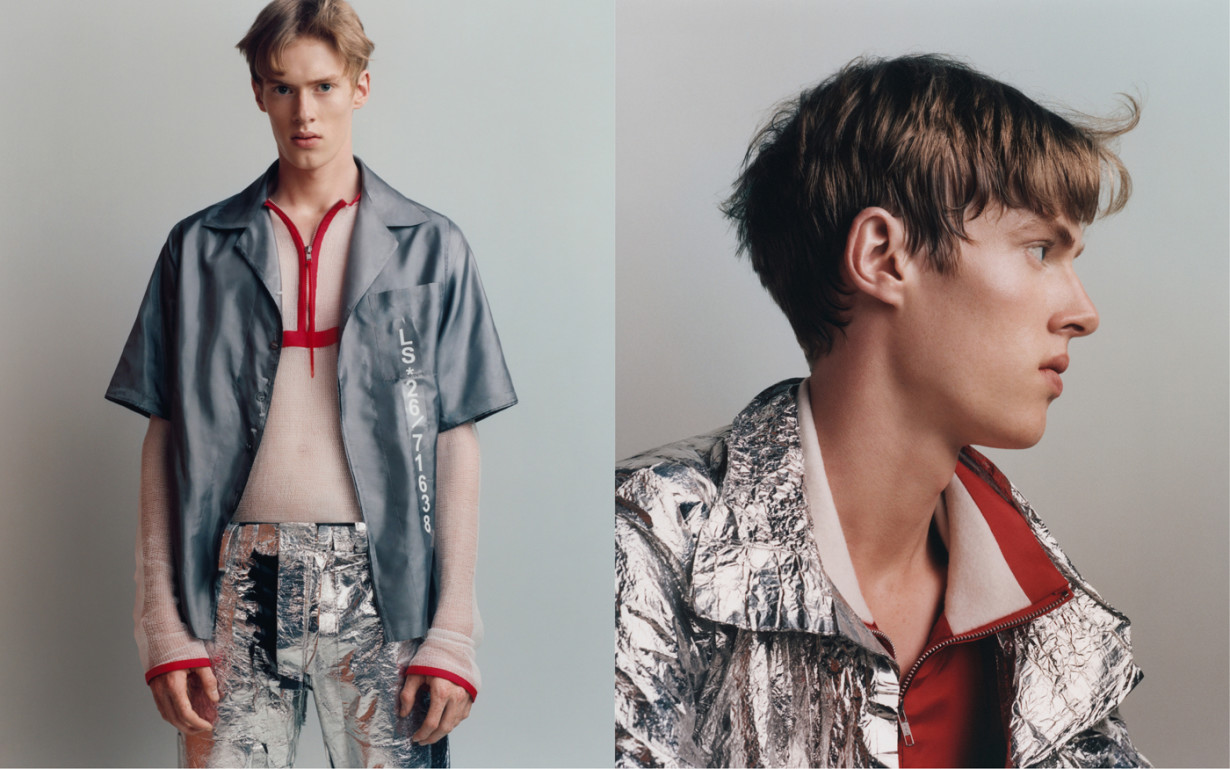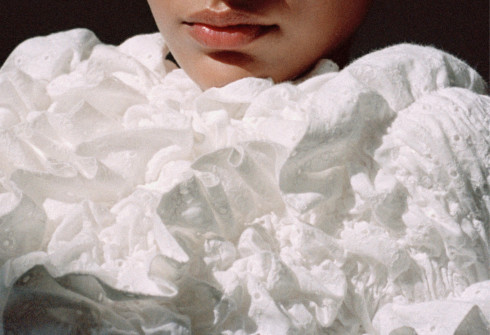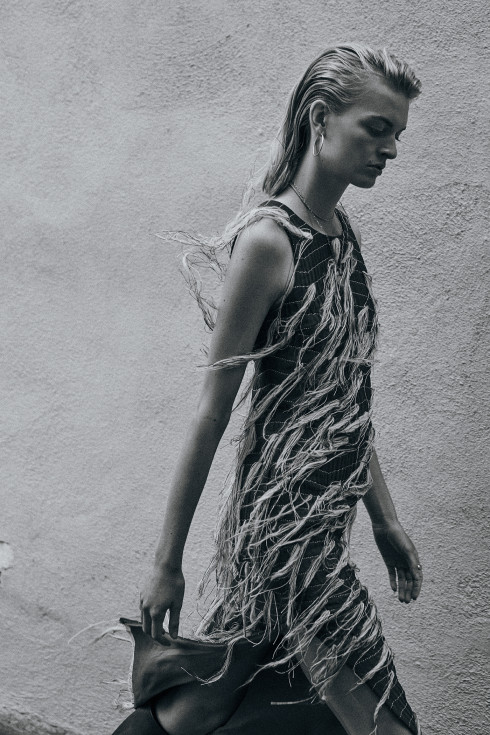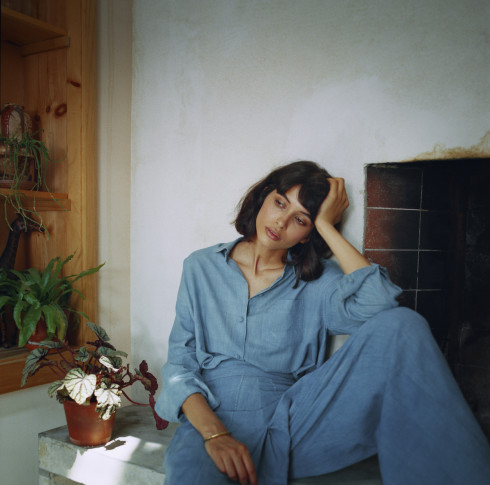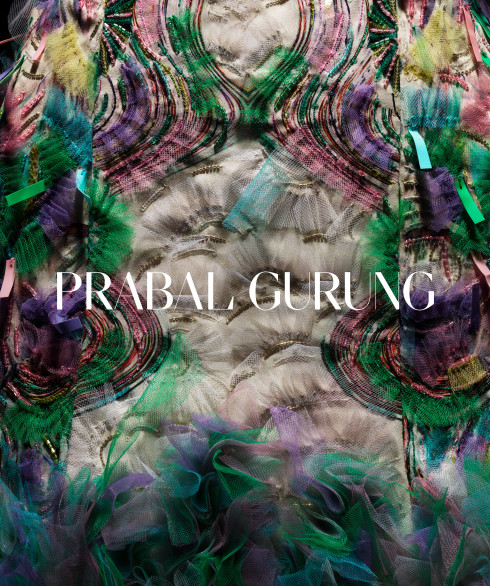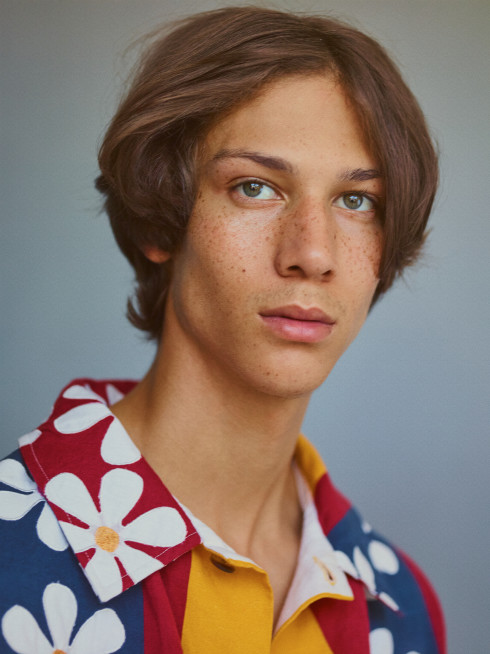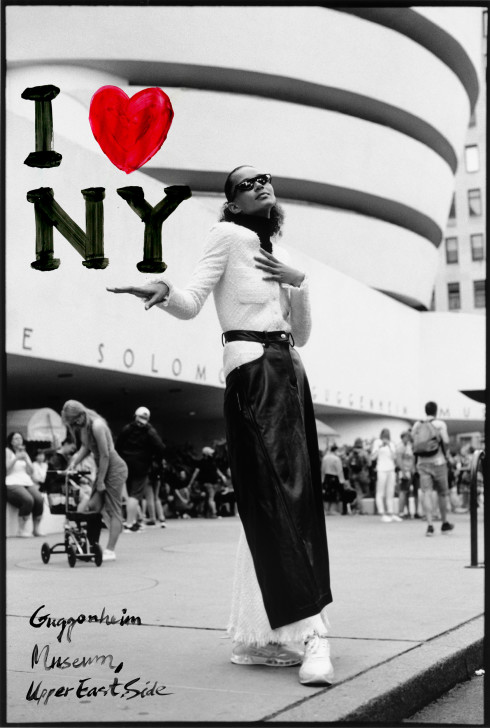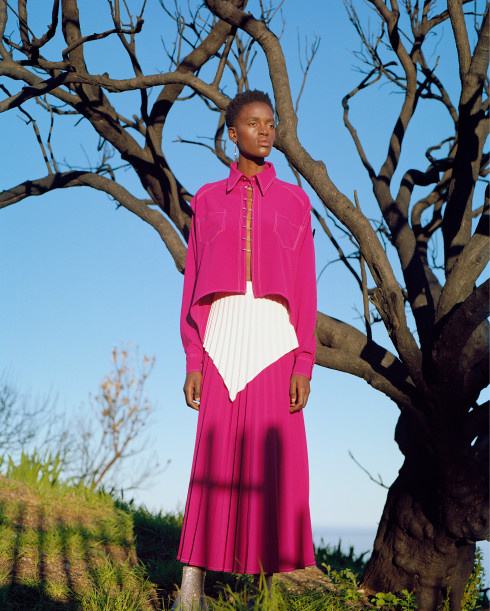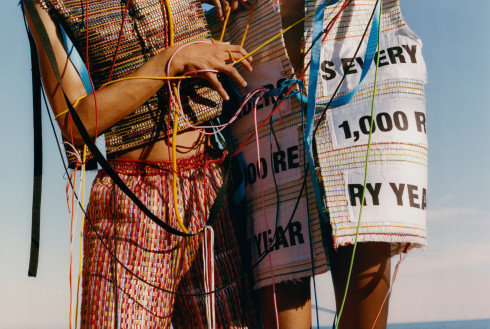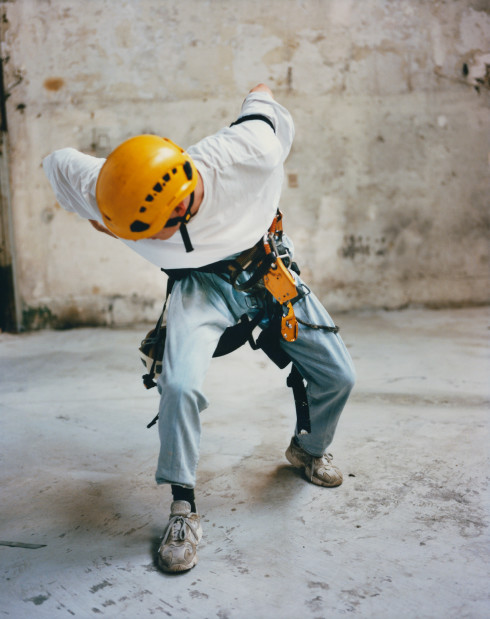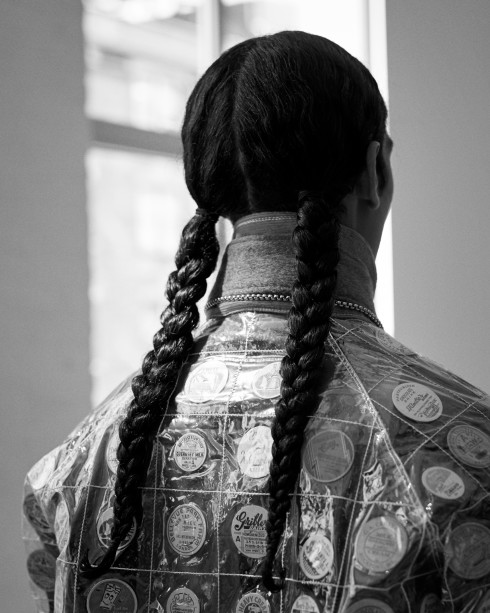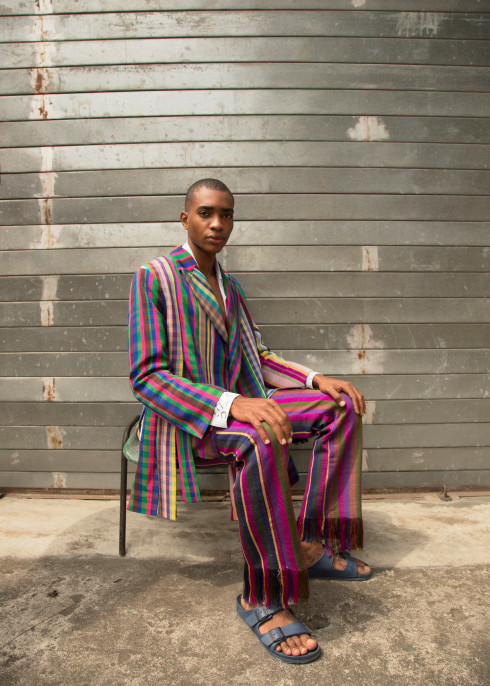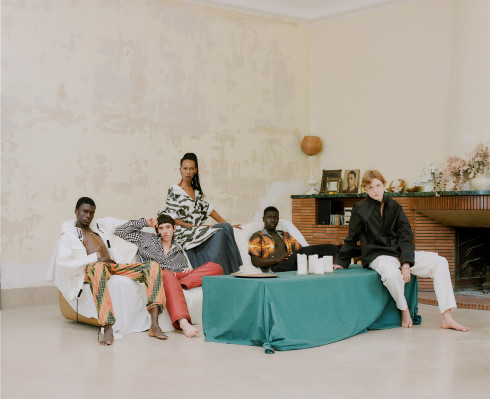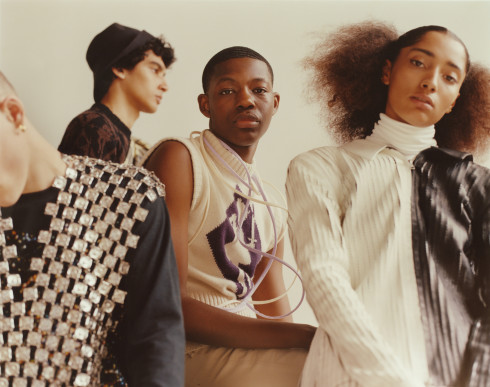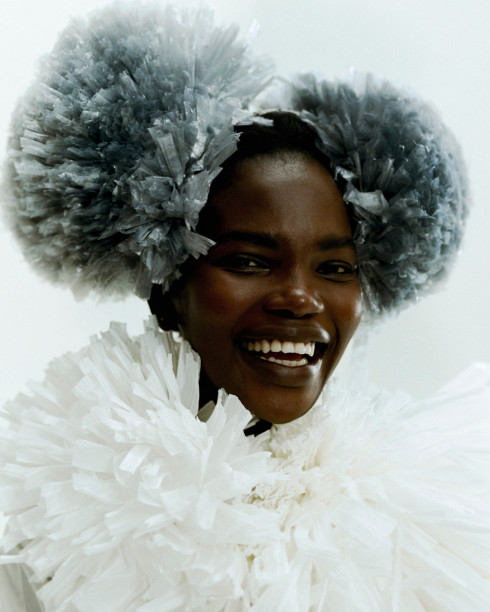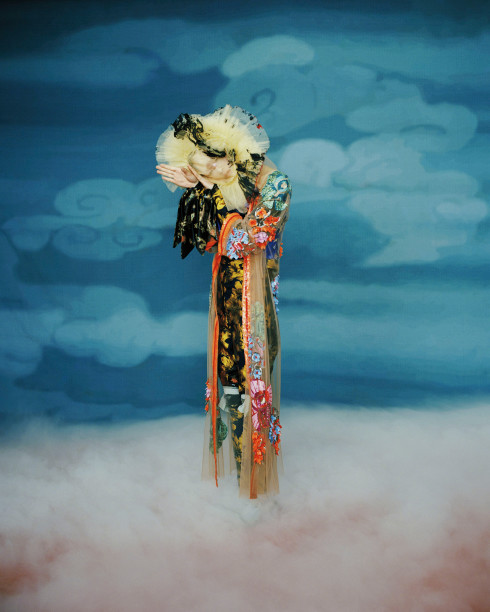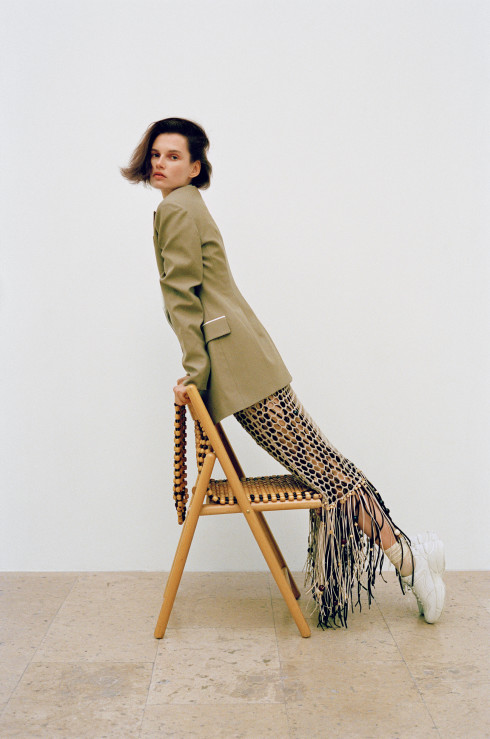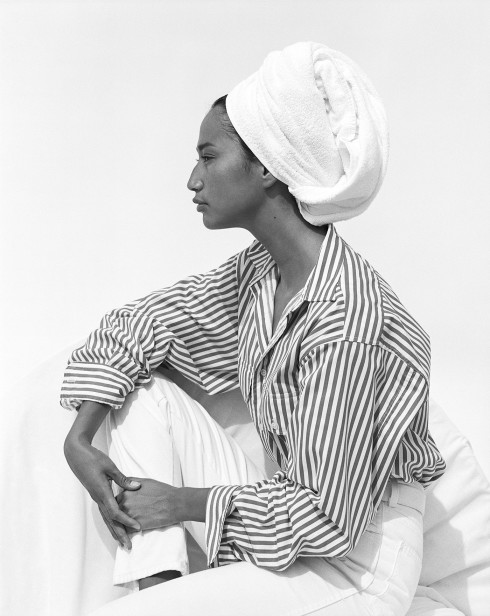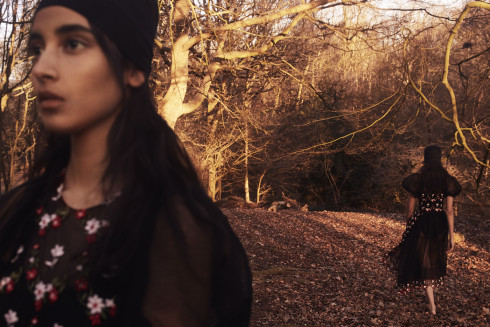- By
- Jonathan Shia
- Photography by
- Andrew Vowles
Styling by Jason Hughes. Hair by Mari Ohashi at LGA. Makeup by Thom Walker. Model: Erik Loebbecke at The Squad. Reporting by Jennifer Mason. Photographer’s assistants: Mark Simpson, Freddy Lee, and Stephen Smith. Stylist’s assistants: Roberta Pinna and Fabiola Bonnet. Hairstylist’s assistant: Pablo Kumein. Makeup artist’s assistant: Rachel Shram. Set design by Thomas Bird. Casting by Liz Goldson at AM Casting. Production by Ella Moore at Rosco Production.
LUKE MITCHELL STEVENS
Fashion East, London’s lauded incubator of young design talent, has had its fair share of adventurous presentations over the years, but few could match the provocative appeal of Luke Mitchell Stevens’s first outing for Spring 2017. Working in collaboration with the artist Patchfinder, Stevens produced a sound installation by wiring each of his models with a contact microphone and asking them to perform the regular routines of a wearer—rustling a hand inside a pocket, sliding the pull of an interlocking zipper—to create a medley of ambient sounds, challenging the established way that fashion is regularly shared through visuals and offering an opportunity for the collection to be experienced through sound. “I was just trying to think about ways of presenting the work which weren’t so image-based, with the huge dominance of representing fashion through image,” the 27-year-old Stevens explains. “I wanted to try to see what potential there was in moving away from that.”
Stevens’s young career has always been marked by this sort of boundary-pushing experimentation. He first moved to London from Kent to study a general arts foundation course, only finding his way to fashion after recognizing its potential as an “alien practice, something that wasn’t so familiar.” He graduated from Central Saint Martins with a degree in womenswear (and was shortlisted for the school’s Nova Award recognizing top talent) before realizing that he was more intrigued by menswear. Stevens worked for the British designer Karl Donoghue for two years after graduating to help establish the brand’s men’s line, which provided a solid grounding in the actual production of the designs. “It was a very small team, so I would be working very hands on with the pattern cutters and the suppliers. They specialized in leather, so I would work really closely with the tannery on development of colors and finishings for skins,” he recalls. “It was really interesting to be that closely involved in the design from such an early stage, because historically with other internships I’ve done, you’re quite removed from that, even as a junior designer. Working like that informed the way I wanted to work afterwards.”
He returned to the Royal College of Art for a master’s in menswear, bringing with him a unique set of interests he had developed on the job, and a drive to unshackle the fashion industry from the constant churn of the seasonal calendar. “It felt to me that the speed in which it operates and the way that it’s so governed by marketing and product really destroys the potential of the kind of work that could be produced within fashion,” Stevens explains. “These alternative systems don’t really exist any longer and that’s a real shame because I think you end up with this one model that removes the potential to be this generator of cultural production, which it historically has always been.”
Perhaps most valuably, Stevens is also adamant about reconceptualizing the production process, attempting to shift away from the mode of overconsumption to a more resourceful mindset. His graduate collection, for example, pulled heavily from the concept of cabbaging—again, picked up from his work experience—in which leftover fabric scraps are collected at season’s end and made into fully formed garments of their own. “As a young designer, you really don’t have the funds, and I think cabbaging was really an approach to responding to that and instead choosing to work with things that were readily available,” he explains. “I would visit scrapyards and collect materials from there which I would then work with, so I was working with scaffolding, netting, and odd bits of fabric.”
For Stevens, the promise of sustainability holds much more potential than he believes most designers can even envision at this point. “You don’t necessarily tackle these issues just by producing the same kind of product in a more sustainable fabric,” he asserts. “I think you have to make work that challenges the root of that overconsumption of goods rather than merely producing the same work in a more sustainable way.”
Having pushed against the industry’s strictures in so many ways already, Stevens is set to interrogate next the value of human creativity and the role of the designer as supreme creator as we face a future of increasing automation. A current ongoing project uses Google’s search-suggesting algorithm to translate photos of his designs into words. “This is feeding these images in and then using these conversions to form this text. It’s almost as if the collection is dictating its narrative,” he explains. “It’s like, if it could speak, what would it be saying? It’s looking at how you present work through text and almost in a way removes me from the design process and creates a process which enables the product to generate new work on its own.”
Take a look at our full portfolio of London’s new menswear scene, including Daniel W. Fletcher, Rory Parnell Mooney, and Alex Mullins.
- By
- Jonathan Shia
- Photography by
- Andrew Vowles
Styling by Jason Hughes. Hair by Mari Ohashi at LGA. Makeup by Thom Walker. Model: Erik Loebbecke at The Squad. Reporting by Jennifer Mason. Photographer’s assistants: Mark Simpson, Freddy Lee, and Stephen Smith. Stylist’s assistants: Roberta Pinna and Fabiola Bonnet. Hairstylist’s assistant: Pablo Kumein. Makeup artist’s assistant: Rachel Shram. Set design by Thomas Bird. Casting by Liz Goldson at AM Casting. Production by Ella Moore at Rosco Production.
